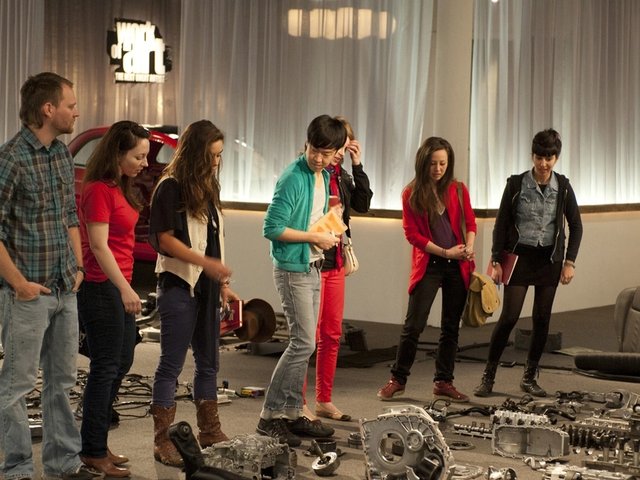Washington, DC
Artists in the US could have less than a year left to freely use drones in their work. Although current flight restrictions apply only to commercial, not artistic, use of drones, the Federal Aviation Administration (FAA) is working on new regulations that are due to be submitted to Congress by September.
The clampdown comes in the face of the drone’s growing accessibility. The unmanned flying vehicles, better known for their deadly use in military strikes, are cheap and readily available, and basic models can be flown without a licence.
“It’s possible to get a spectacular aerial shot with a $500 drone,” says Arthur Holland Michel, the co-director of the Center for the Study of the Drone at Bard College in New York. Artists who use them range from the graffiti artist Katsu, who created a spray can-wielding drone to tag walls from the comfort of his own home, to Alex Rivera and Angel Nevarez, who attached one to a model of a gold “low-rider” car to create the LowDrone, 2005, which they flew along the US-Mexico border. There has been “a particular rise in student projects using drones almost entirely for art purposes”, says Fletcher Bach, a graduate student at New York University; the institution hosted a conference on drones and aerial robotics in 2013.
Current policy “puts artists in a strange place”, says Megan Ralstin, an attorney with Schlackman Intellectual Property Law. It permits recreational drone use but restricts commercial activity. “What if an artist experiments with drone photography purely for fun, and then later begins to sell the prints?” she asks.
Some artists are making serious political statements, which could be a cause of concern for the US government. The photographer and geographer Trevor Paglen has taken blurred photographs of drones and created impressionistic vistas of secret military sites using pictures taken by the machines. “I’m trying to get a glimpse into the secret state that surrounds us all the time, but that we have not trained ourselves to see very well,” he told the Independent newspaper in June 2014. The anonymous art collective Bureau of Inverse Technology went further when it flew a drone over California’s Silicon Valley in 1997 and videotaped no-camera sites.
There are also more pragmatic reasons for the FAA’s proposed restrictions. The increasing ubiquity of these flying robots could make the skies less safe. “It is more and more likely that [they] will come into dangerous conflict with the National Airspace System,” says the artist and author Adam Rothstein. He suspects, however, that artists have little to worry about. “The FAA has little incentive to crack down on [hobbyist] drone operators, especially when art projects involving drones are temporary and transitory.”
Nonetheless, the artistic appeal of robotic devices shows no sign of dwindling. “Drones are glamorous and seductive objects,” says James Bridle, the artist behind the social-media phenomenon Dronestagram, which tracks drone strikes around the world. “They give the God’s-eye view so beloved of military commanders, and the corresponding rush of power.”


